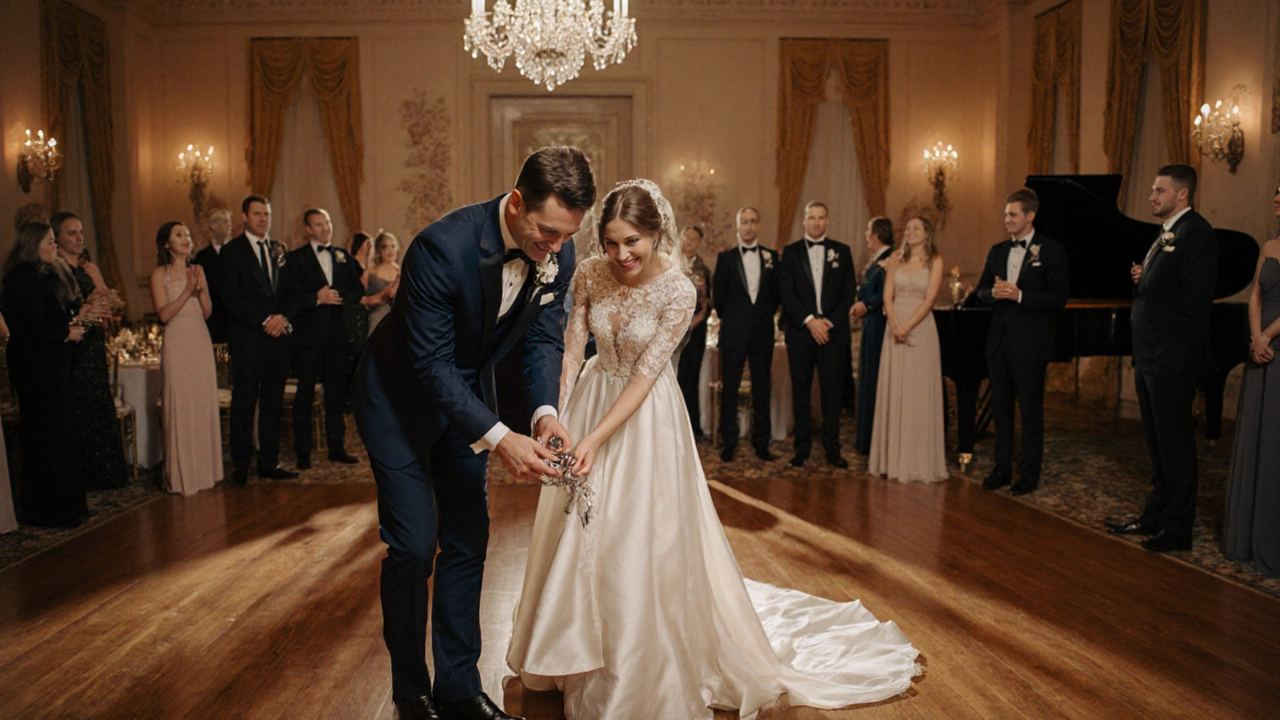Wedding Garter Customs: Traditions, Meaning, and Modern Takes
When you think of wedding garter customs, you might picture a playful moment at the reception—someone pulling off a lace band, guests cheering, maybe a tossed garter flying through the air. But wedding garter customs, a centuries-old bridal tradition tied to luck, fertility, and social ritual. Also known as the garter toss, it’s more than just a fun party stunt—it’s a symbol that’s changed as much as weddings themselves. Back in medieval times, guests would rush the bride to steal pieces of her dress for good luck. To stop the chaos, brides started wearing garters they could hand out instead. Over time, the garter became a stand-in for the bride’s purity, and later, a token of fertility. The groom removing it with his teeth? That was a playful twist on proving he could "claim" his bride. Today, most couples don’t care about the old meanings—but they still do it, because it’s tradition, and because it makes for a great photo.
There’s more to wedding garter tradition, a ritual that connects brides to generations of brides before them than just tossing. The garter itself is often a keepsake, sometimes passed down, sometimes custom-made to match the dress. It’s usually worn on the right leg, just above the knee, and often matches the bride’s lingerie or wedding theme. Some brides choose to wear two: one for the toss, one to keep. Others skip the toss entirely and give the garter to their mother or a close friend as a personal gift. It’s no longer about proving anything—it’s about meaning. And if you’re wondering if it’s still relevant? Over 60% of brides in recent surveys still include a garter in their wedding day plan, even if they don’t toss it. That’s not just habit. That’s choice.
What about the bride garter, the physical object at the heart of this custom? It’s not just lace and ribbon. It’s a tiny piece of symbolism that can carry emotion, humor, or quiet nostalgia. Some garters are embroidered with initials or wedding dates. Others are heirlooms—grandma’s silk, mom’s vintage lace. And yes, some are just cute, sparkly bands bought online for $15. There’s no right or wrong. The only rule? Do what feels true to you. If the thought of a garter toss makes you cringe? Skip it. If you love the idea of a little surprise moment? Go for it. The real tradition isn’t in the act—it’s in the intention.
And let’s be real—this isn’t just about brides. The wedding symbolism, the deeper meanings hidden in rituals like the garter often get lost in the noise. But symbols matter. They connect us to people we love, to stories we’ve heard, to feelings we can’t quite name. Whether you keep it old-school or make it your own, the garter is one of those little things that turns a wedding from a ceremony into a memory. You’ll find real stories in the posts below: brides who turned the garter into a tribute, couples who replaced the toss with something quieter, and others who just laughed and tossed it anyway. There’s no one way to do this. But there’s a way that’s right for you—and you’ll find it here.
Why Husbands Remove the Garter: Tradition Explained
Discover why husbands remove the garter, its historic roots, symbolism, modern twists, and tips for a fun, inclusive wedding tradition.
Read more